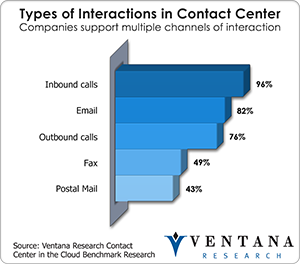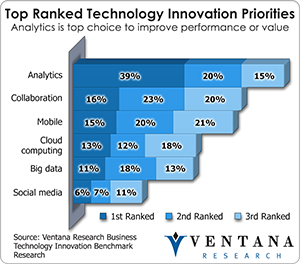I recently wrote how IBM is making customer analytics smarter. Since then IBM has run events in North America and Europe to demonstrate how it is continuing these efforts and expanding into other areas. Outside of the customer space you can read how my colleagues assess its efforts: Mark Smith discusses HR, Robert Kugel sees its impact on business overall, and Tony Cosentino addresses it in IT. Our research My focus remains the customer and I have learned more about what IBM is doing in social media, identity reconciliation, visualization, mobile apps and big data.
As part of its customer analytics portfolio, IBM has social media analytics. Going beyond basic social media analytics, the product brings together IBM research assets for demographic, geographic and behavioral analytics, uses its SPSS advanced analysis to support sentiment analysis and segmentation, is capable of identifying influencers and analyzing their social activities, has big data built in, and includes a series of prebuilt dashboards that can be configured to individual user requirements. It works with several  forms of social input, including blogs, microblogs, review sites, news sites and video. The analysis can identify hot topics, trends and brand risks, as well as measuring customer sentiment, a company’s reach, geographic variations and a company’s share of comments posted on social media sites. Perhaps most importantly it can understand root causes of posts and thus identify new business opportunities, spot weaknesses in products, services and marketing and sales messages and suggest improvements. The combination of capabilities allows users to build closed-loop processes that, for example, analyze social content and its associated demographic profile, build targeted surveys to learn about different customer segments in more detail, apply predictive analytics, and build outreach programs to specific groups within a segment. We recently awarded TELERYX our 2013 Business Technology Leadership Award for Social Media that use IBM to do many of the items that I have listed.
forms of social input, including blogs, microblogs, review sites, news sites and video. The analysis can identify hot topics, trends and brand risks, as well as measuring customer sentiment, a company’s reach, geographic variations and a company’s share of comments posted on social media sites. Perhaps most importantly it can understand root causes of posts and thus identify new business opportunities, spot weaknesses in products, services and marketing and sales messages and suggest improvements. The combination of capabilities allows users to build closed-loop processes that, for example, analyze social content and its associated demographic profile, build targeted surveys to learn about different customer segments in more detail, apply predictive analytics, and build outreach programs to specific groups within a segment. We recently awarded TELERYX our 2013 Business Technology Leadership Award for Social Media that use IBM to do many of the items that I have listed.
My research into the contact center in the cloud shows that today companies  need to support multiple channels for customer engagement or risk losing certain customer segments including the traditional ones like inbound calls (96%) and outbound calls (76%). The research shows that on average companies support approximately five different channels. Among other challenges, this demand has added to the issue of identity resolution – finding out who the customer is. Each channel typically has its own identifier, for example, a fixed line phone number, a mobile phone number, an email address, a Twitter handle, a LinkedIn reference number and of course a home address. When customers have multiple account numbers and variations of their names, companies have a big job to tie these all together to identify which interactions are with the same person. IBM designed Infosphere Identity Insight to help prevent fraud, but it also can support analysis of customer data to identify who a customer really is. The technical details are rather complicated, but as the customer experience grows in importance and therefore knowing the customer becomes even more important, companies should pay more attention to this issue and evaluate how products such as Identity Insight can help.
need to support multiple channels for customer engagement or risk losing certain customer segments including the traditional ones like inbound calls (96%) and outbound calls (76%). The research shows that on average companies support approximately five different channels. Among other challenges, this demand has added to the issue of identity resolution – finding out who the customer is. Each channel typically has its own identifier, for example, a fixed line phone number, a mobile phone number, an email address, a Twitter handle, a LinkedIn reference number and of course a home address. When customers have multiple account numbers and variations of their names, companies have a big job to tie these all together to identify which interactions are with the same person. IBM designed Infosphere Identity Insight to help prevent fraud, but it also can support analysis of customer data to identify who a customer really is. The technical details are rather complicated, but as the customer experience grows in importance and therefore knowing the customer becomes even more important, companies should pay more attention to this issue and evaluate how products such as Identity Insight can help.
I continued my update about IBM products at a recent analyst event in London on big data. Many of the topics mirrored what my colleagues have written about in the blogs I identified earlier, but a couple of things struck home to me. When IBM talks big data, it means really big. One case study presentation talked about downloading hundreds of thousands of terabytes of data after a flight so engineers can analyze the plane’s performance. To support this level of processing, IBM has developed new hardware and software tools that make previous data analysis performance look slow in comparison. This scale makes processing of customer data seem simple, and I realized that big data only comes into customer engagement in processing social media posts and call recordings, both of which companies typically have in the hundreds of thousands. In this context it is surprising that although IBM has built advanced text analytics into its products, it has yet to include voice analytics.
The other aspect of big data analytics that struck me as increasingly important in my field is predictive analytics. In this era when the customer is king, predicting customer behavior is the most important business analytics capability according to our technology innovation benchmark to help companies be more forward looking. IBM puts this all into the context that analytics is evolving. First there was descriptive analytics, which told users what had happened, then came predictive analytics, which told companies what might happen, then came descriptive analytics, which tells users how they can achieve the best outcome from their activities, and now we are moving into an era of cognitive analytics, which uses past and current events from as many sources of data as possible to tell users what their next action should be. As IBM adds these abilities to its products, users can process more forms of customer data and build more advanced predictive models; this is something else companies should evaluate.
One of the sessions at the London event focused on making analytics easier to use. IBM demonstrated 20 different ways of visualizing information, not all of which are yet generally available. Beyond that IBM also gave a glimpse of nearly 200 other ways of visualizing data – yes, 200 – that can be configured to match any requirements. As these capabilities become available, users will have access to them on mobile devices, which will support setting up a range new uses on the device. All this might seem excessive, but during discussions on customer metrics I have learned that the form presentation, especially visualization, of metrics is almost as important as the actual numbers; something as simple has having a chart scaled the wrong way around can create a wrong impression. But making visualization actionable will require more improvement by IBM to make the discovery process on it more interactive as my colleague has pointed out.
Another session focused on Watson Engagement Advisor, which I wrote about earlier this year. This recently launched IBM platform allows companies to build smart mobile apps. It is based on the Watson platform, which can intelligently search for information buried in any form of structured or text-based data. It thus enhances mobile apps by connecting customer requests to the information they are looking for and can, for example, lead customers through complex purchases by using rules-based searches driven by context. Engagement Advisor can search publicly available sources of data, so it could be a concern that companies undermine customer trust by demonstrating how much personal data they can access. However, designed correctly these apps have the potential to dramatically improve what customers can achieve through self-service; they have the capability to intelligently connect to a person if a transaction does not complete within the app. It is early days in their adoption, but I recommend that companies track how this kind of analytics could help them innovate in customer engagement.
Over all these sessions I learned a lot about how  IBM is applying its considerable resources to systems that support customer engagement. With building on the demand of business analytics that our research finds as the most important technology innovation priority as first ranked by 39 percent of organizations. Building on IBM business analytics technology portfolio is the investment in advancing research and development of future use for the area of customer analytics. Underpinning many of these developments are research teams that not many other companies could afford and a product portfolio that through a combination of in-house developments and numerous acquisitions spans information management, big data, marketing, customer feedback, analytics, mobile apps in the cloud. I imagine that pulling all these sources into the solutions I have described is not easy, even for a company of IBM’s size. However from what I heard and saw, IBM is becoming a major force in what is now a vital area for customer analytics and how to improve customer engagement and customer experience management.
IBM is applying its considerable resources to systems that support customer engagement. With building on the demand of business analytics that our research finds as the most important technology innovation priority as first ranked by 39 percent of organizations. Building on IBM business analytics technology portfolio is the investment in advancing research and development of future use for the area of customer analytics. Underpinning many of these developments are research teams that not many other companies could afford and a product portfolio that through a combination of in-house developments and numerous acquisitions spans information management, big data, marketing, customer feedback, analytics, mobile apps in the cloud. I imagine that pulling all these sources into the solutions I have described is not easy, even for a company of IBM’s size. However from what I heard and saw, IBM is becoming a major force in what is now a vital area for customer analytics and how to improve customer engagement and customer experience management.
Regards,
Richard J. Snow
VP & Research Director












